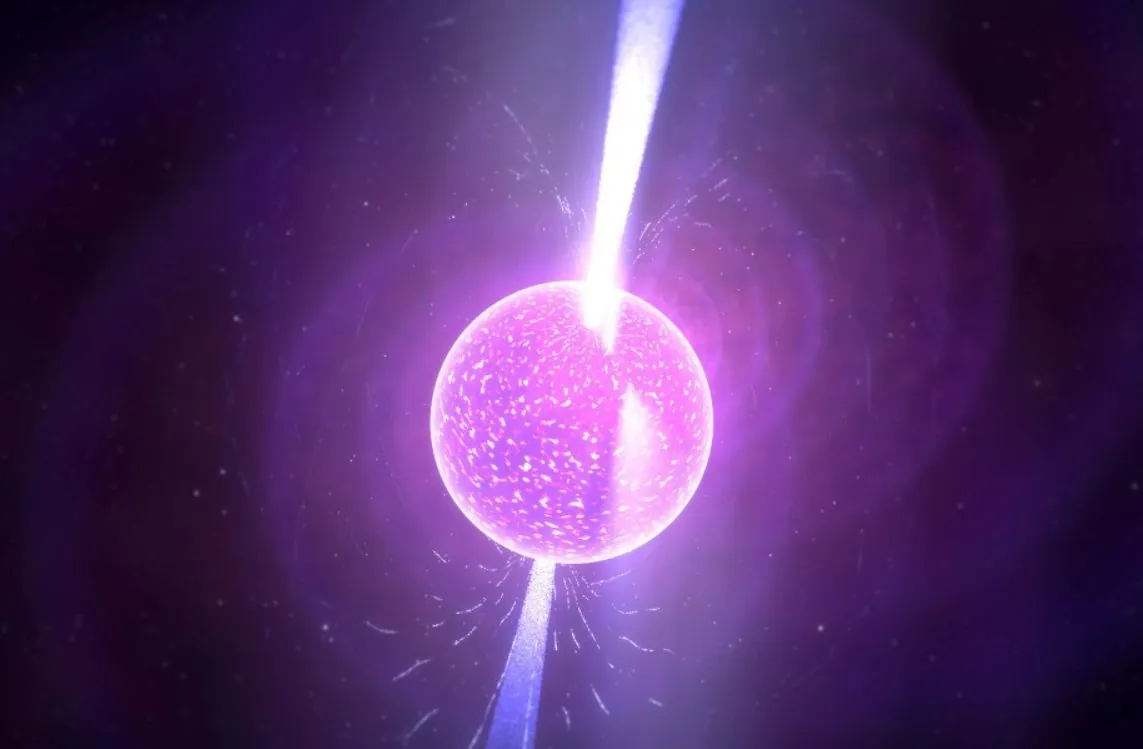Collisions between neutron stars may briefly delay a group of "space ghosts" - US researchers conclude
Kyiv • UNN
Collisions between neutron stars can temporarily delay neutrinos known as "ghost particles." The researchers believe that the discovery will help to understand the process of neutron star fusion and the formation of elements heavier than iron.

Scientists have discovered what can affect the "delay" of neutrinos, which are also known as "ghost particles". This discovery will also help to understand the merger of neutron stars - a turbulent environment that will tell you how to forge elements heavier than iron. Writes UNN with reference to Space.
Details
Collisions between neutron stars can temporarily delay neutrinos, also known as "ghost particles.
Scientists have modeled collisions between these super-thick and dead stars. The phenomenon can "trap" neutrinos, or"ghost particles". In addition, the discovery may help scientists better understand neutron star mergers in general. We are talking about a sufficiently turbulent environment to forge elements heavier than iron - the corresponding elements cannot be created even in the hearts of stars, the researchers note.
Help
Neutrinos are considered "ghosts" of a collection of particles, characterized by a lack of charge and incredibly low mass. The corresponding characteristics mean that neutrinos very rarely interact with matter. Example to understand: you read this sentence, more than 100 trillion neutrinos are flying through your body at a speed close to the speed of light, and you don't feel anything. Currently, it is assumed that a collision of neutron stars can briefly capture a group of cosmic ghosts.
How it was discovered
New simulations of neutron star mergers were conducted by physicists at Pennsylvania State University. Studies have shown that the point where these "dead stars" meet (the interface) becomes incredibly hot and dense.
In fact, it becomes extreme enough to trap a whole bunch of these "space ghosts," the material says
Despite not interacting with matter, the neutrinos produced by the collision are trapped at the merger boundary of the neutron star and become much hotter than the relatively cold hearts of colliding dead stars.
Neutrinos "come out of thermal equilibrium" with the cold cores of neutron stars. In turn, already during this hot phase, which lasts about two to three milliseconds, neutrinos can interact with the matter of the neutron star. It is about restoring thermal equilibrium.
Addition
Neutron stars are born when a massive star, at least eight times the mass of the Sun, runs out of fuel for nuclear fusion in its core. After the fuel supply runs out, the star can no longer support itself against the pressure of its own gravity.

This triggers a series of core collapses that cause the fusion of heavier elements, which then leads to the formation of even heavier elements. The chain ends when the dying star's heart is filled with iron. Gravitational collapse occurs again, causing a supernova explosion that blows away the star's outer layers and most of its mass.
The final core collapse creates an entirely new state of matter unique to supernova neutron stars. Negative electrons and positive protons collide together. A mix of neutrons - neutral particles - is formed. "Degeneracy pressure" prevents further collapse of these neutron-rich nuclei. But it can be overcome by stars with enough mass, which completely collapse - giving birth to black holes.